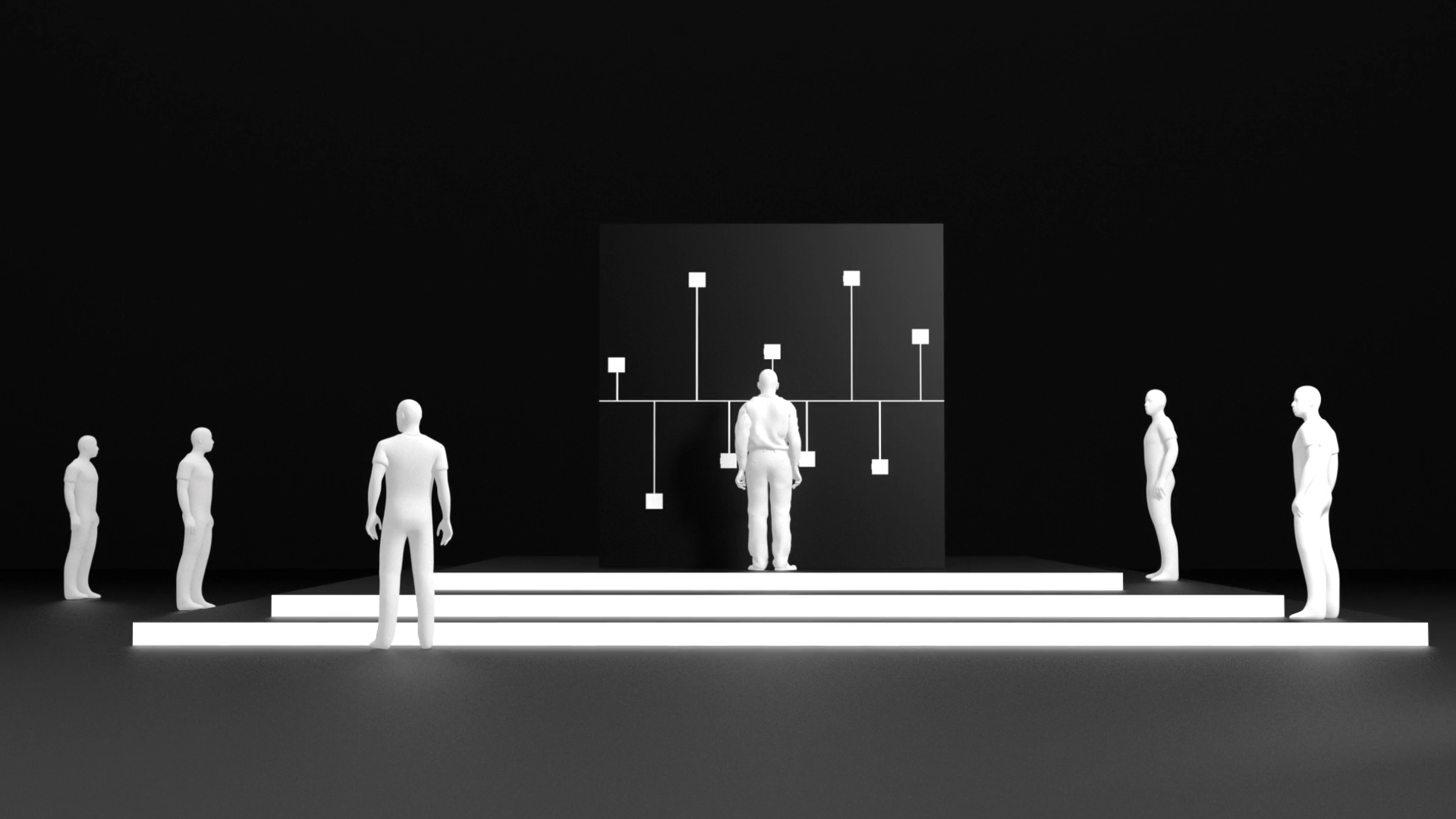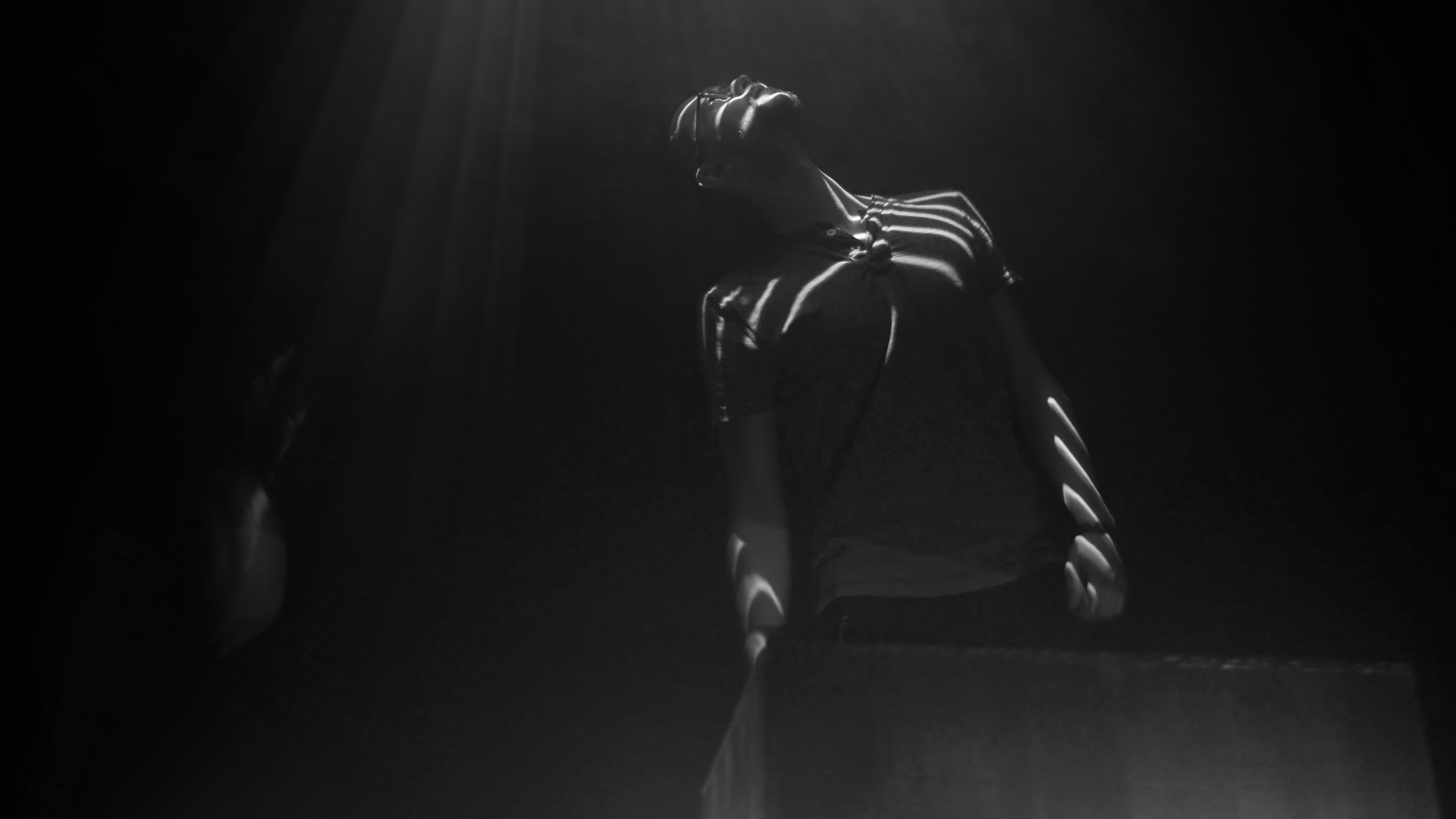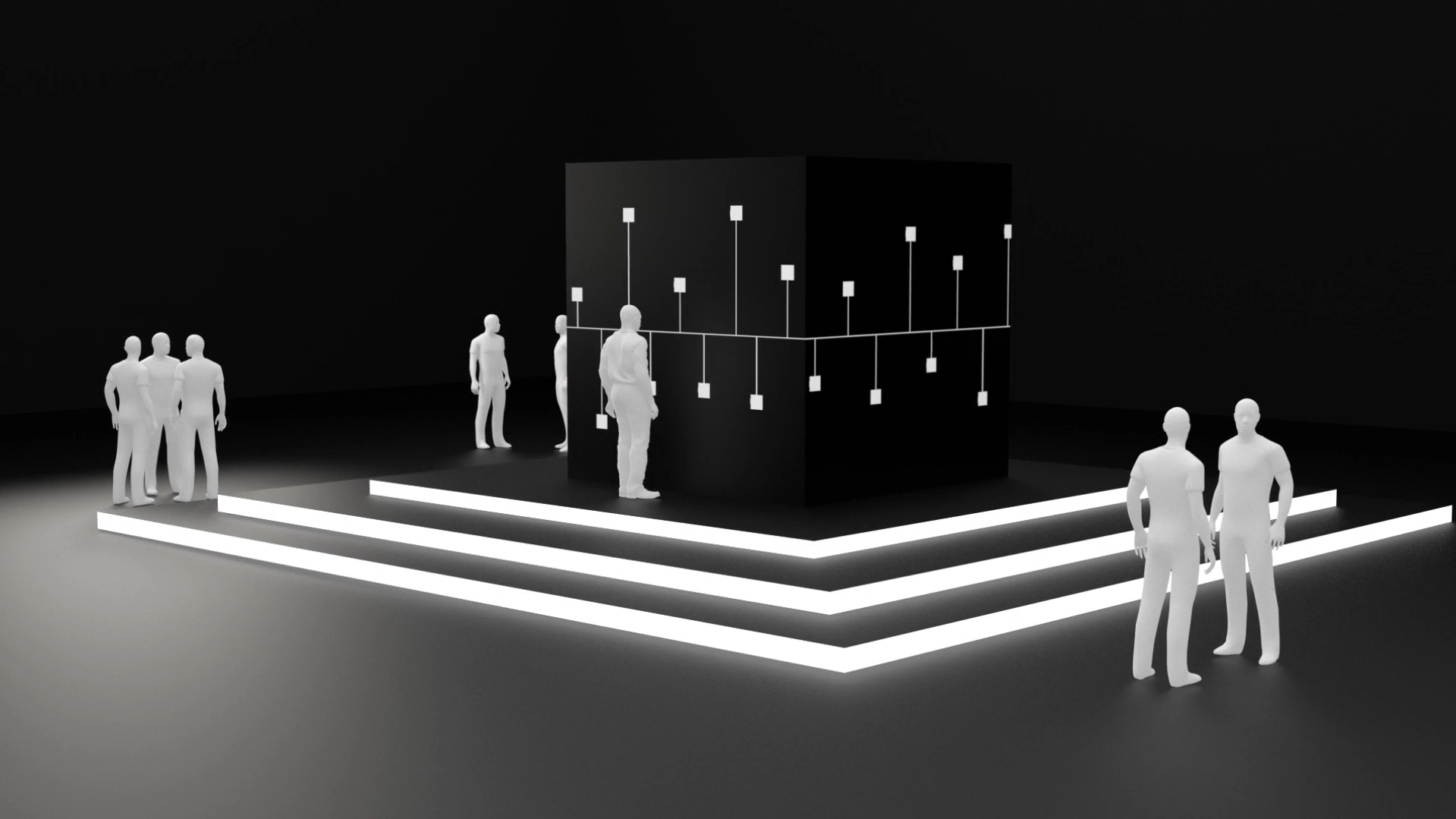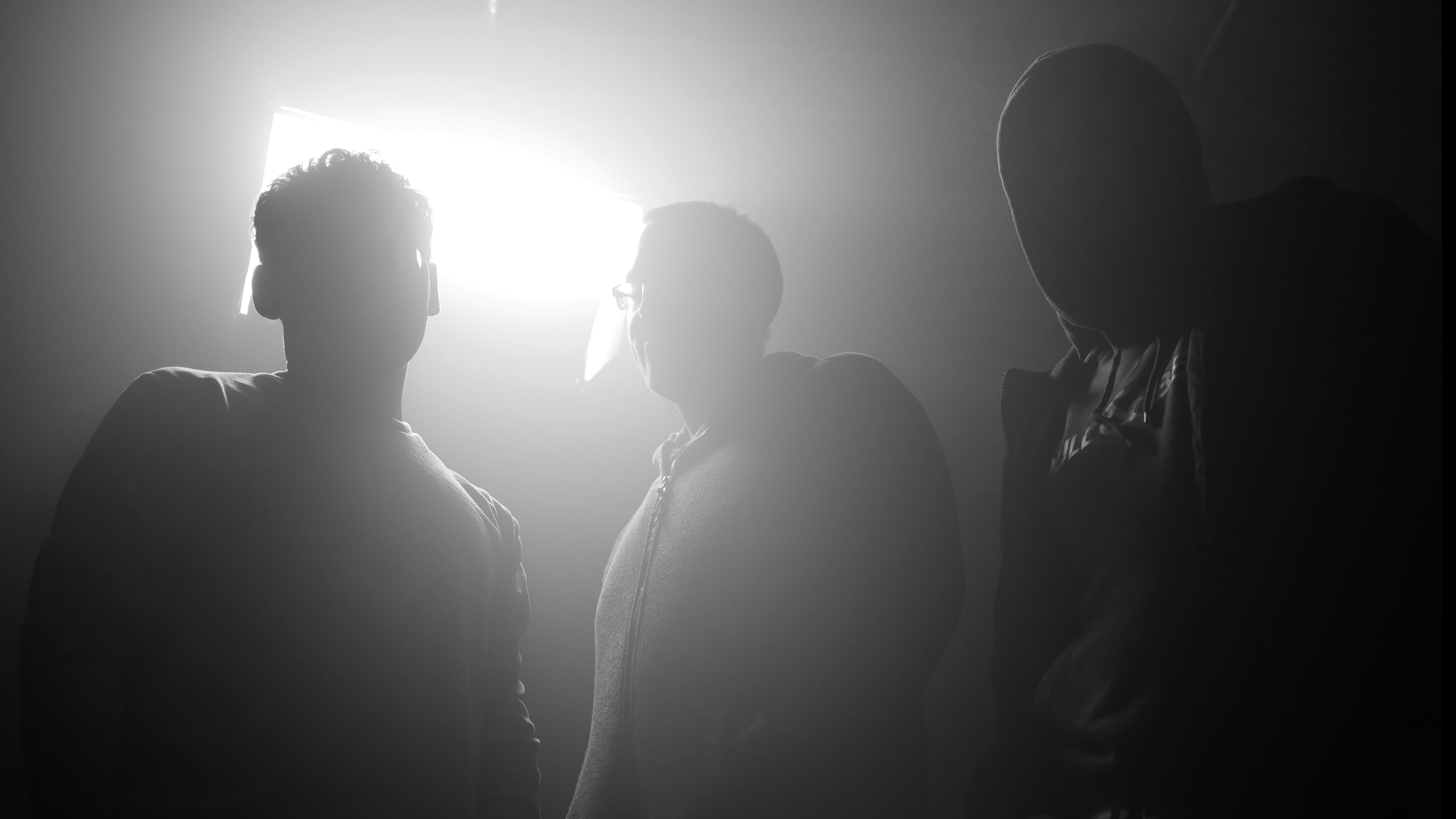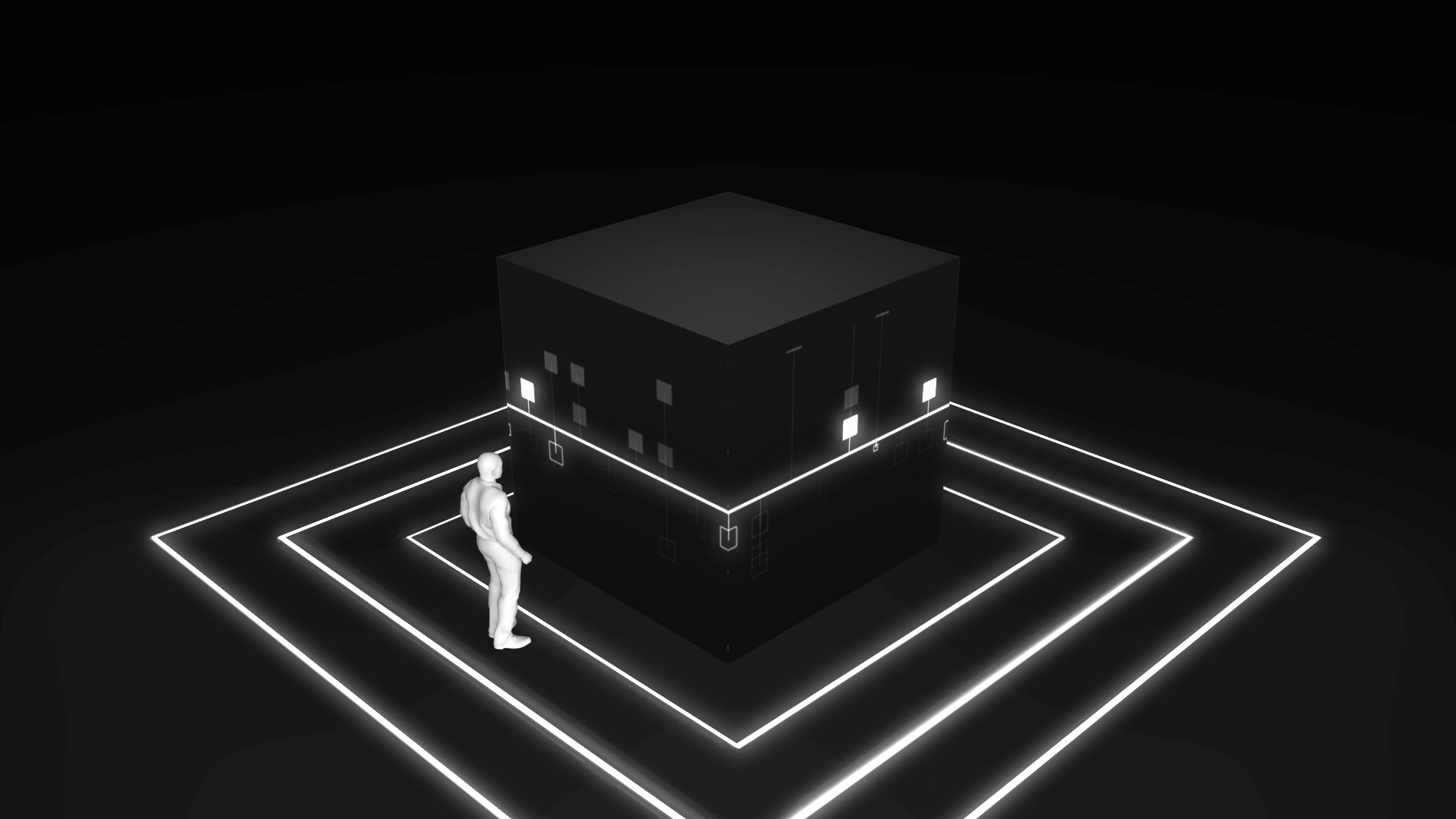Interactive Experience
sequential thoughts
Do myths still exist?
We researched on that - and found the modern myth of artficial intelligence.
- please scroll to see more -
1 - Casefilm
2 - Subject
We recieved the briefing to create an installation for the Ars Electronica with “Mythology & Rhythmology” as its central theme.
In ancient times, myths were created to explain natural phenomenons with the existence of divine beings. People didn't know where lightning came from? They made up Zeus. Today we can explain most of it by physical or biological evidence or blame ourselves for our own ignorance. Sorry Zeus.
But it would be hypocritical to assume that we now live in a society free of any myths. New hard-to-understand technologies emerge every day. Technologies, that sometimes even their creators can’t fully wrap their head around.
This is the case with Artificial Intelligence. The hidden layers of a neural network "learn" how to do specific tasks in an incomprehensible way for human reasoning, showing parallels to impenetrable “black-boxes”.
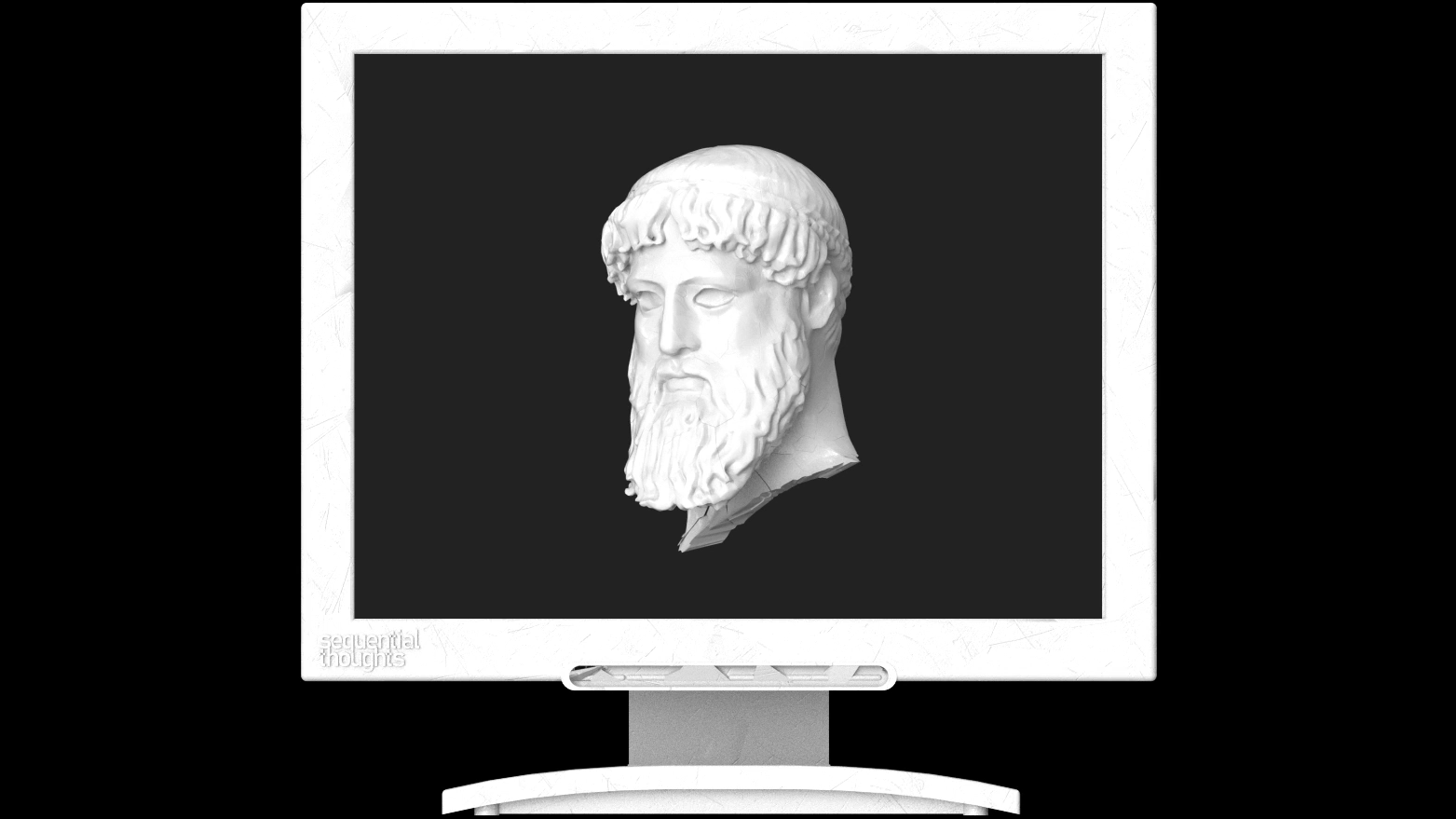
3 - Transfer
With our installation "sequential thoughts" we give a voice and a face to the until this point unperceivable hidden layers.
We sampled the neurons of the A.I. while it learned a dataset composed of handwritten pictures of digits. After each digit we transferred the singular neurons as notes onto a sequencer adjusting their position by the weight they got assigned during the learning process.
We soon realized that the A.I. developed some sort of rhythm and melody that became more sophisticated as the learning iterations and time progressed.
With the A.I. now speaking out, the human role within this relationship had to be expressed as well. Therefore, we decided to let the audience control the speed at which the A.I. learns by adjusting their proximity to it.
4 - Concept & Realization
Controversially to how an A.I. is perceived, we took its “inner values” and brought them to the surface by projecting them on the outside of a black box.
The appearance additionally resembles one of the most famous religious monuments known: The “Kaaba” in Mekka.
It is here where the spectator can step into the previously mentioned domain of tension, facing the ongoing struggle between ambition and fear.
Getting too close, the AI accelerates so fast, that the experience turns hectic and aesthetically unnerving. If the spectator finds the sweet spot though, the A.I. will begin to develop a melody that is pleasant to the ear.
If nobody steps closer, the A.I. progress will remain dormant, stale and unappealing.
If we don’t let our ambition get the better of us and don’t over-exploit the services of Artificial Intelligence, we may remain safe.
Inbetween - Visual Exploration
Before we found our final visual concept we explored many different ways to express the values of the A.I. . This is a selection of our output.
5 - Technical Aspects
For our Prototype of the installation we used Processing, MadMapper, three Full-HD Projectors, and an Arduino with Proximity Sensor.
The fractures in the Casevideo were done using Houdini, the renderings were done in Autodesk Maya.
7 - Credits
Concept:
Sebastian Wilhelm
Pascal Santaella
Lead Programming
(AI, Visual Framework):
Sebastian Wilhelm
Prototyping & Visual
Development in Processing:
Sebastian Wilhelm
Pascal Santaella
Projection Mapping,
Arduino Programming &
Rendering:
Pascal Santaella
There's More:



